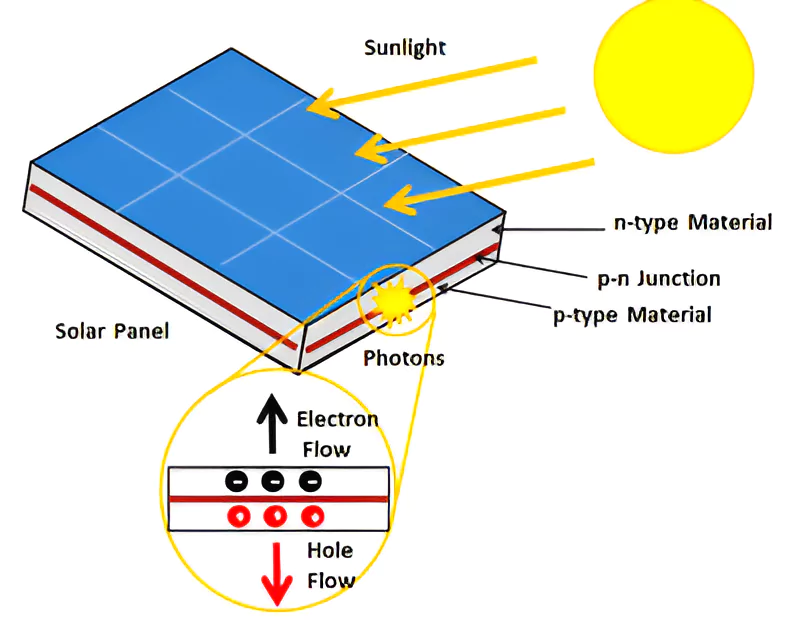Context

Recently, the government has imposed import restrictions to increase local sourcing of solar modules to support India’s renewables manufacturing ecosystem.
Government Imposes Import Restrictions on Solar PV Cells
- The Ministry of New and Renewable Energy (MNRE) re-implemented the ALMM list to promote domestic manufacturing capabilities and support India’s renewables ecosystem.
What is the ALMM?
- The ALMM list stands for Approved List of Models and Manufacturers of Solar Photovoltaic (PV) Modules.
- The ALMM is a list of solar PV module manufacturers eligible for use in government projects, including those set up for electricity sale to central and state governments.
- It was initially introduced in 2021 but was kept in abeyance for the past financial year.
| Import Restrictions
It is a government imposed regulation to control imports.
Types of import restrictions include:
- Tariffs
- Import quotas
- Restrictions on the amount of foreign currency available to cover imports
- Import deposits
- Import surcharges
- The prohibition of various categories of import
|
Reason for Re-implementation of ALMM List
- Support Domestic Manufacturing: The ALMM list prioritizes domestically manufactured solar equipment for government projects.
- Improved Production Capacity: The government believes domestic manufacturers have increased production capacity and can now compete with cheaper imports.
- This is also a major reason for justifying re-implementation of the ALMM list.
- Import Substitution: The focus is on import substitution for encouraging domestic manufacturing to meet local demand for solar equipment. However, imports have not been restricted entirely.
Statistics of India’s Solar Cell Imports
Solar Power in India
India has an estimated solar power potential of 748.99 GW, indicating that the full potential of solar energy is yet to be harnessed.
- Contribution of Solar Power in 2024
- Renewable Energy Share: Solar power contributes to about one-third of all energy generated from renewables.
- It shows that India has more potential for solar energy which is not fully utilised.
- Demand Growth and Economic Activity
- Fastest Rate of Demand Growth: India accounts for the fastest growth rate for electricity demand through 2026 among major economies.
- This is because of strong economic activity and expanding consumption of products to mitigate extreme weather.
India’s Target for Future
- Targeted Installed Capacity by 2030:
- India aims to achieve a remarkable 500 GW of installed capacity from non-fossil fuel sources by 2030.
|
-
- China and Vietnam are the primary suppliers of these products.
- Import Statistics:
- Over the past five years, India imported around $11.17 billion worth of these products.
- This amounts to around 0.4% of India’s total exports during the same period.
- Dominance of China:
- China supplies 53% of India’s solar cell imports and 63% of solar PV module imports.
Reasons for India to Rely on Solar Cell Imports
-
Dominant Manufacturing Capacity of China:
- China possesses over 80% of the manufacturing capacity across all stages of solar cell production (polysilicon, wafer, cell, and modules).
- In addition to the above, China has a well-established solar cell supply chain, with readily available raw materials, skilled labor, and efficient manufacturing processes.
- This allows them to produce and deliver solar cells quickly and reliably.
-
Lower Manufacturing Capacity in India:
-
- India’s domestic manufacturing capacity is significantly lower compared to China, and it’s primarily focused on the final stage (modules) rather than the entire production process.
-
Cost Competitiveness:
- China’s large-scale production ( 80% manufacturing capacity ) , lower cost, and supportive government role in prioritizing solar PV as a strategic sector make it able to provide solar cells at competitive prices.
- In China, electricity accounts for more than 40% of production costs for polysilicon and almost 20% for ingots and wafers.
-
Limited Domestic Alternatives:
- Until recently, India lacked strong domestic alternatives to Chinese imports. The Production Linked Incentive (PLI) scheme aims to change this, but it will take time for domestic manufacturers to ramp up production and compete effectively.
India’s Policies to Reduce Reliance on China for Solar Cell Imports
India has taken three significant steps to address its over-dependence on solar imports over the past five years.
- ALMM order: The process began with the introduction of the ALMM order in January 2019.
- The issue gained prominence during the COVID-19 pandemic due to severe global supply chain disruptions.
- PLI scheme: In response, Finance Minister Nirmala Sitharaman proposed the ₹19,500 crore PLI scheme in the Union Budget of 2022-23.
- Objective: To enhance domestic manufacturing across the entire solar supply chain, from polysilicon to solar modules.
- Implementation of high import duties: Government imposed duties to encourage domestic production.
- 40% customs duty on solar PV modules
- 25% customs duty on solar PV cells (These duties were later reduced)
- These duties were later reduced as solar capacity additions slowed down.
- As per Reuters, It occurred because Some developers charged low tariffs to secure power purchase contracts, which increased cost pressure on projects with a capacity of about 30 GW.
Objectives of India’s Policies to Reduce Solar Cells Imports
- Promote domestic manufacturing of solar equipment in India.
- Reduce dependence on imports, particularly from China.
- Make solar power generation more cost-competitive in the long run.
Also Read: PM Suryodaya Yojana
To get PDF version, Please click on "Print PDF" button.

